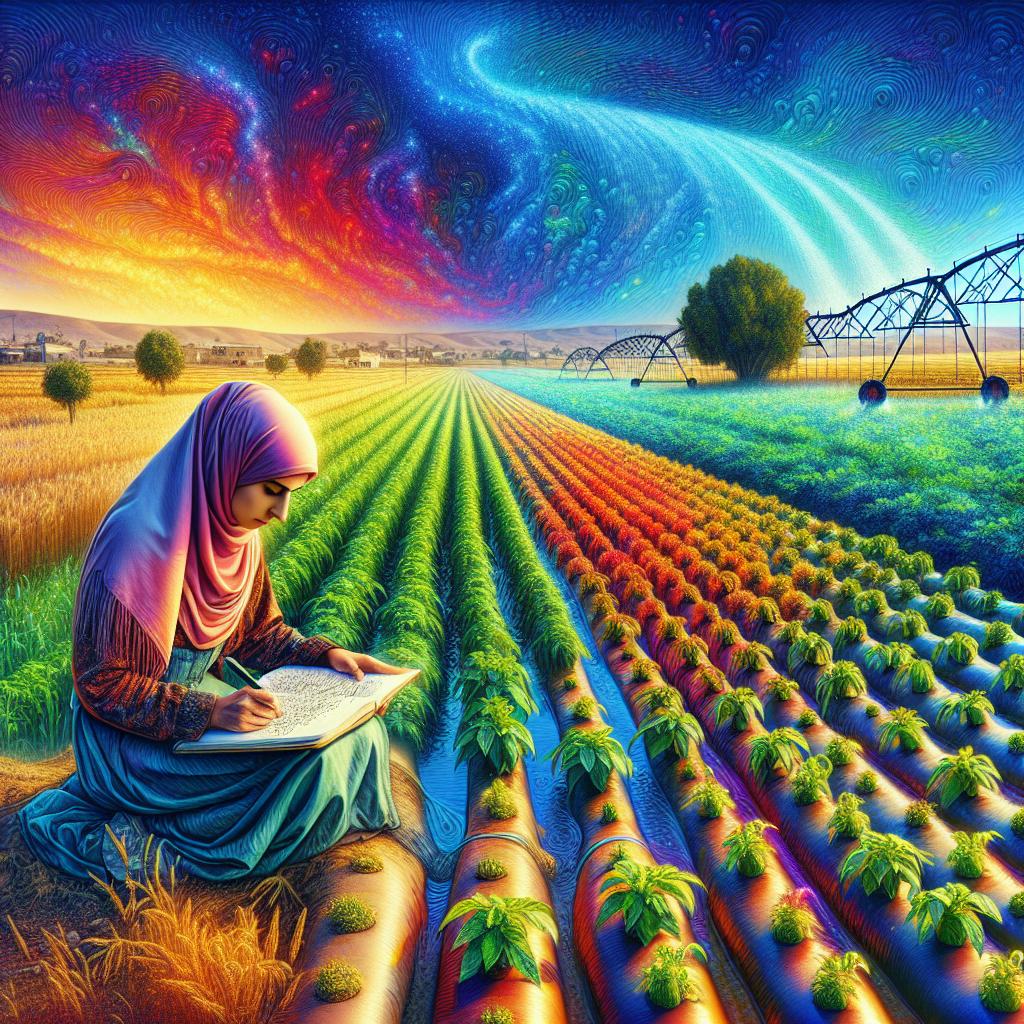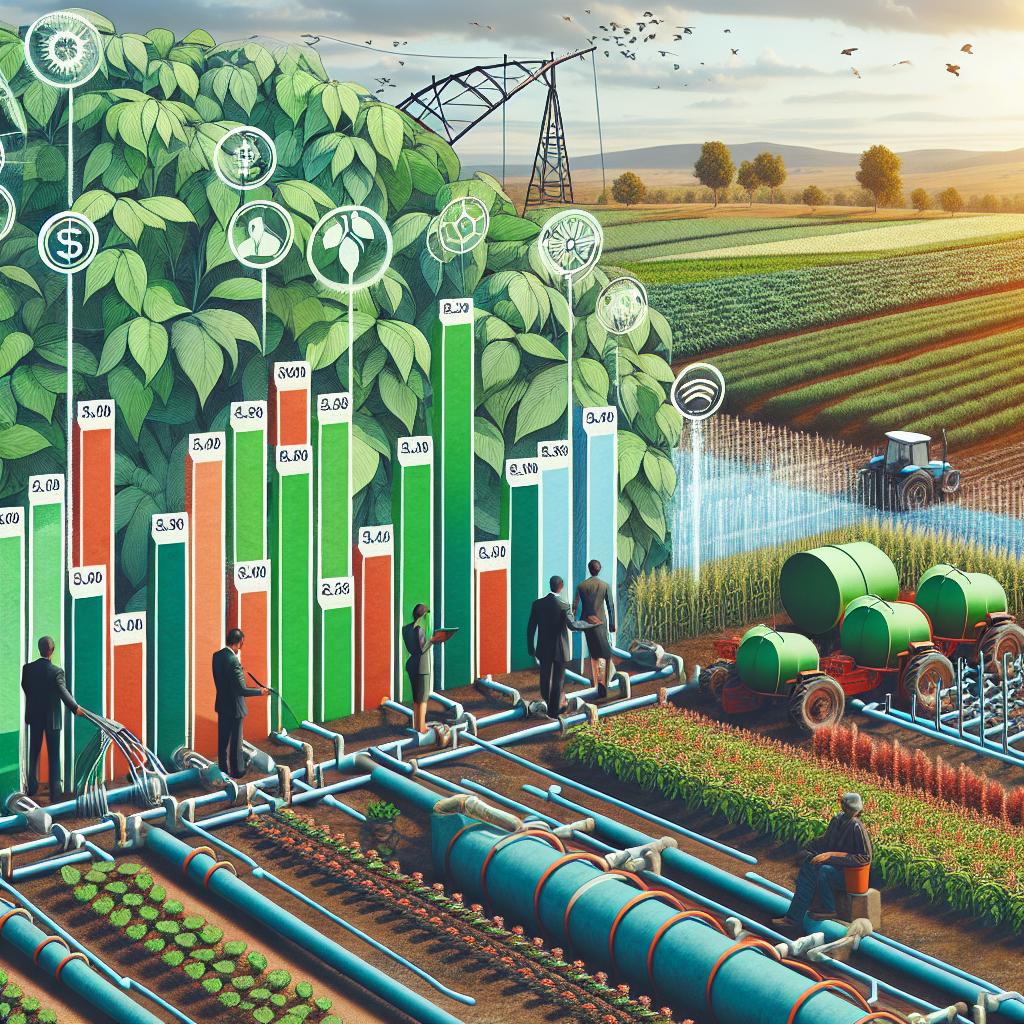This post may contain affiliate links which means I may receive a commission for purchases made through links. Learn more on my Private Policy page.
Irrigation Innovations: Navigating the Waters of Farm Challenges
Picture a sun-kissed field, rows of vibrant crops swaying gently in the breeze, and the promise of a bountiful harvest looming on the horizon. But amidst this pastoral paradise lies an often-overlooked hero of agriculture: irrigation. Just like a well-timed sprinkle of rain, efficient irrigation can make or break a farm’s success. Yet,as many farmers know all too well,the path to perfecting this art is riddled with challenges. From unpredictable weather patterns to outmoded systems, the hurdles can feel daunting. But fear not, fellow cultivators! In this friendly exploration, we’ll dive into the most common challenges in farm irrigation—and more importantly, we’ll uncover practical, down-to-earth solutions. So grab your gear and let’s embark on this journey together, ensuring that every drop counts and every seed thrives!
Understanding water Needs: Tailoring Irrigation to Your Crops
When it comes to efficient irrigation, understanding the specific water needs of your crops is paramount. Different plants have distinct requirements for moisture, which can fluctuate based on growth stages, local climate, and soil type. By conducting a thorough analysis, farmers can identify the ideal irrigation strategies tailored for their crops. Here are some approaches to assess and manage water needs:
- Soil Moisture Monitoring: Utilize sensors or conventional methods to gauge moisture levels, ensuring timely irrigation.
- Crop water Demand: Familiarize yourself with the specific water requirements for each crop throughout its lifecycle.
- Weather Forecasting: Keep an eye on local weather patterns to adjust irrigation schedules accordingly.
Additionally, implementing a targeted irrigation system can drastically improve water use efficiency. Drip or micro-irrigation techniques deliver water directly to the plant roots, minimizing evaporation and runoff. Consider incorporating a scheduling system based on the plants’ needs rather than a one-size-fits-all approach. A simple comparison table can definitely help clarify the water needs of different crops:
| Crop | Water Requirement (inches/week) |
|---|---|
| Tomatoes | 2-3 |
| Corn | 1.5-2.5 |
| Wheat | 1-2 |
| Potatoes | 1.5-3 |

Navigating Soil Health: The Key to Efficient Water Usage
Healthy soil is the cornerstone of any triumphant irrigation strategy, acting as a natural reservoir that optimizes water retention. By enhancing soil health through practices such as cover cropping and organic amendments, farmers can substantially reduce irrigation needs. Improving soil structure increases its porosity and capacity to hold moisture, allowing plants to access water more efficiently. Additionally, integrating microbial diversity into the soil promotes nutrient cycling and improves overall plant resilience, making them better suited to withstand dry spells.
Moreover, understanding the soil’s specific water-holding capacity can substantially improve irrigation efficiency. Farmers can conduct simple tests, such as the screwdriver test or the soil moisture meter, to determine the appropriate irrigation schedule. Utilizing drip irrigation systems can also maximize water delivery directly to the plant roots,minimizing evaporation and runoff. To further support these efforts, consider creating a table to monitor water usage alongside crop health indicators:
| Crop Type | Water Usage (liters/week) | Soil Moisture Level |
|---|---|---|
| Tomatoes | 70 | Optimal |
| Corn | 90 | Needs Attention |
| Potatoes | 50 | Optimal |

Tackling Technology: Embracing Smart Irrigation Solutions
Modern agriculture faces a myriad of challenges, especially when it comes to managing water resources efficiently. Traditional irrigation methods can often lead to overuse or waste, exacerbating the issues of drought and soil degradation. fortunately, smart irrigation solutions have emerged to address these pressing concerns. By leveraging technologies such as soil moisture sensors,weather forecasts,and automated systems,farmers can optimize water usage,ensuring crops receive the right amount of moisture at the right time. This not only promotes healthier plants but also conserves precious water resources.
Adopting these solutions can also result in significant cost savings over time. Smart irrigation systems enable farmers to monitor and manage their water consumption through intuitive platforms,making adjustments based on real-time data. The benefits of implementing these technologies can be seen in various ways:
- reduced Water Waste: Precision watering minimizes irrigation runoff.
- Improved Crop yields: Targeted water supply encourages optimal growth.
- labor Efficiency: Automated systems reduce the need for manual monitoring.
embracing these innovative techniques can lead to lasting farming practices that meet both environmental and agricultural demands.
Budgeting for Success: Cost-Effective Strategies for Sustainable Irrigation
Implementing effective budgeting strategies is key to overcoming irrigation challenges on the farm. With proper planning,farmers can achieve sustainable irrigation solutions that do not drain their resources. Here are some cost-effective approaches to consider:
- Invest in technology: Utilizing smart irrigation systems can streamline water usage and reduce costs over time.
- Regular Maintenance: Routine checks on irrigation infrastructure can prevent costly repairs and ensure optimal performance.
- Optimize Water Schedules: Understanding the specific water needs of different crops can lead to ample savings.
Additionally, forming partnerships with local agricultural organizations can provide access to valuable resources and expert advice. Collaborating with fellow farmers to share irrigation equipment or technological resources can also help reduce individual costs. Consider creating a table to visualize the potential savings:
| Strategy | Potential Savings (%) |
|---|---|
| Smart Irrigation Systems | 20-30% |
| Regular Maintenance | 15-25% |
| Optimized Water Schedules | 10-15% |
By embracing these budgeting strategies, farmers can not only tackle common irrigation problems but also foster a sustainable farming surroundings that promises longevity and profitability.
In Conclusion
As we conclude our journey through the fields of farm irrigation, it’s clear that while challenges might sprinkle a little unpredictability into the mix, they’re far from insurmountable. From navigating the whims of weather to mastering the art of water efficiency, understanding and addressing these hurdles can transform your irrigation system from a mere necessity into a powerful ally for your crops.
Remember, every drop of water is a chance to nurture, to grow, and to thrive. By staying informed and embracing innovative solutions, you can ensure that your irrigation practices not only meet the needs of your crops but also respect the precious resources of our planet.
So, as you step back into your fields, armed with new insights and strategies, keep your spirits high and your watering techniques sharp. With a sprinkle of creativity and a dash of determination, you’re well on your way to overcoming those irrigation challenges and cultivating a bountiful harvest. happy farming, and may your fields flourish!
This post may contain affiliate links which means I may receive a commission for purchases made through links. Learn more on my Private Policy page.

